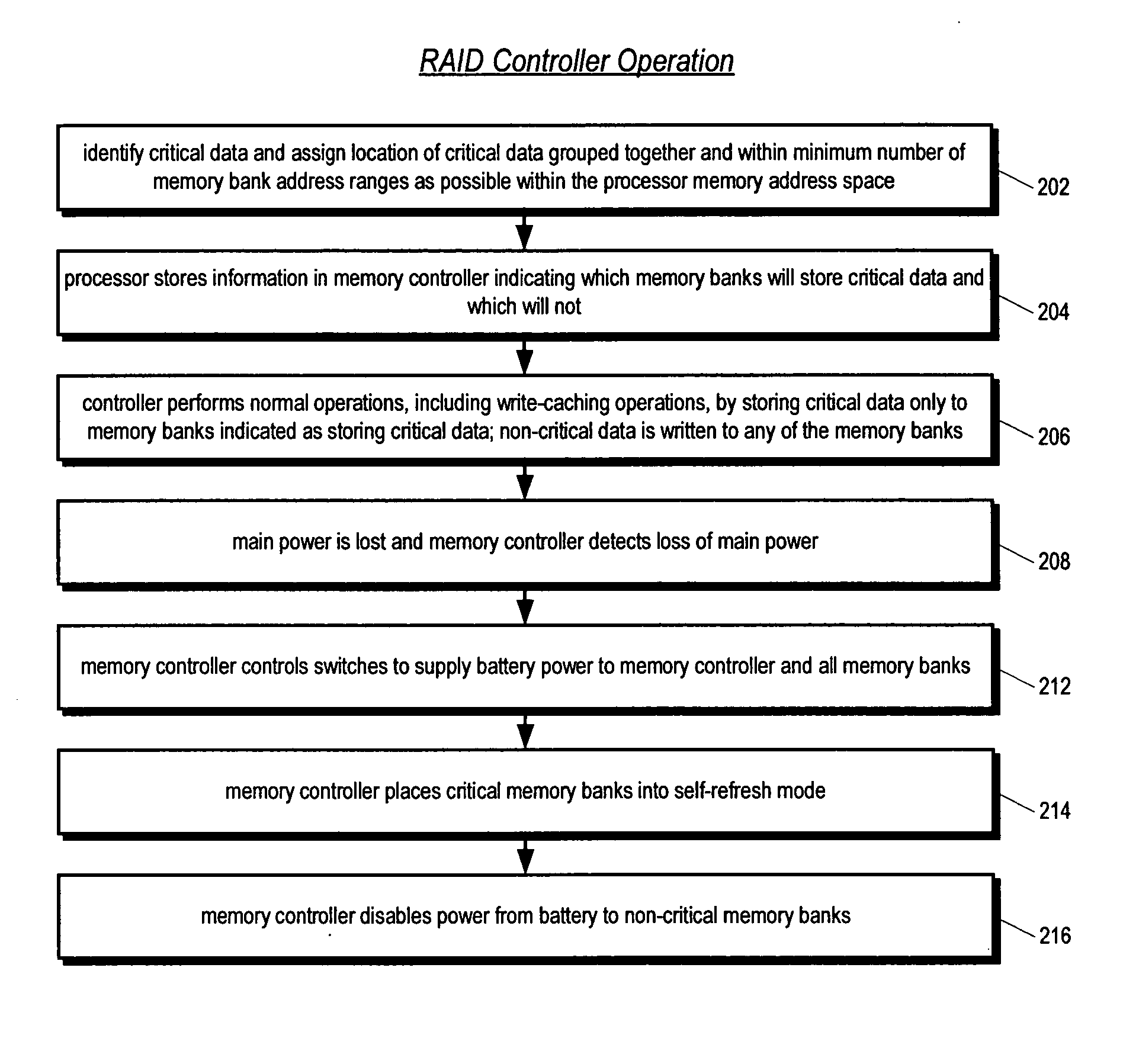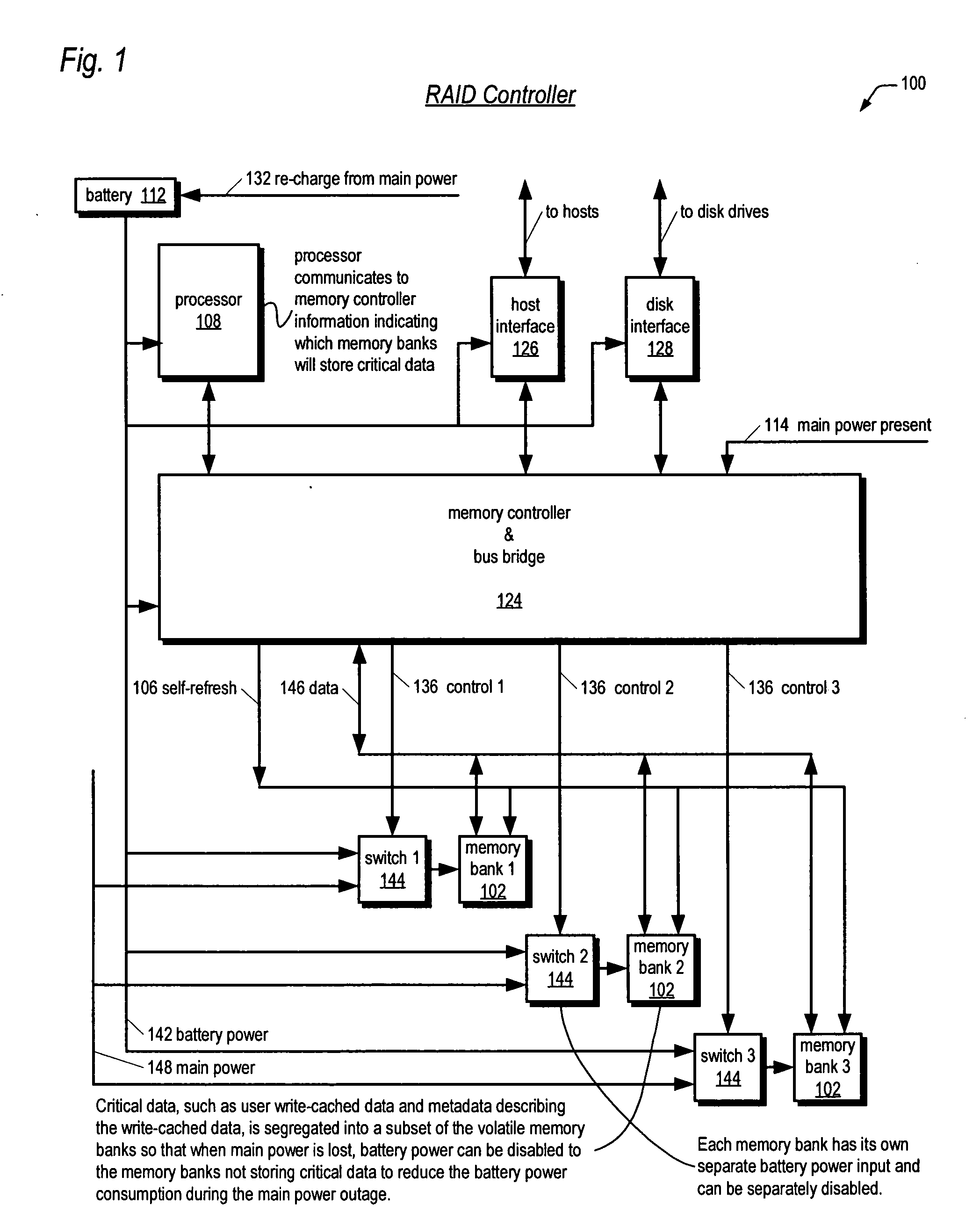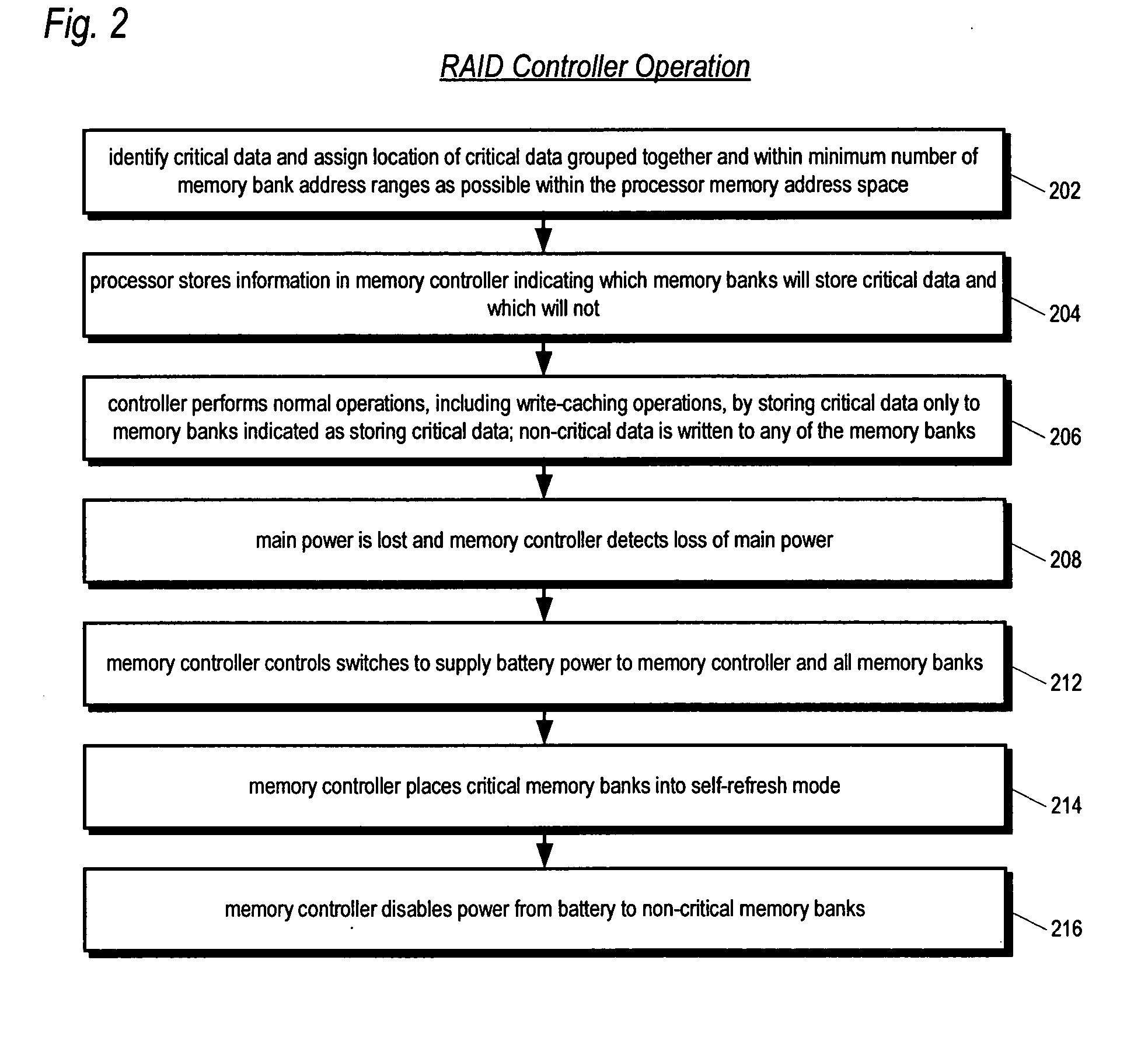Mass storage controller with apparatus and method for extending battery backup time by selectively providing battery power to volatile memory banks not storing critical data
a storage controller and volatile memory technology, applied in the direction of memory address/allocation/relocation, instruments, sustainable buildings, etc., can solve the problems of system vulnerability to data loss, and consuming battery power even longer than a non-raid controller. , to achieve the effect of extending the critical memory time, reducing the likelihood of user data loss, and reducing the amount of battery power consumed
- Summary
- Abstract
- Description
- Claims
- Application Information
AI Technical Summary
Benefits of technology
Problems solved by technology
Method used
Image
Examples
Embodiment Construction
[0013] Referring now to FIG. 1, a block diagram illustrating a write-caching mass storage controller 100, such as a write-caching RAID controller, according to the present invention is shown. In one embodiment, the controller 100 may be one of a pair of active-active redundant fault-tolerant RAID controllers for providing high data availability. Advantageously, the controller 100 powers down volatile memory banks that are not storing critical data in response to a loss of main power in order to extend the time that the battery can supply power to the volatile memory banks storing critical data to avoid loss of user data, as described herein.
[0014] As used herein, the term critical data is intended to denote data which must be retained by the controller 100 during a loss of main power to avoid loss of write-cached user data. The critical data may include, but is not limited to, the write-cached data itself, metadata, and log data. Metadata is data that describes the write-cached dat...
PUM
 Login to View More
Login to View More Abstract
Description
Claims
Application Information
 Login to View More
Login to View More - R&D
- Intellectual Property
- Life Sciences
- Materials
- Tech Scout
- Unparalleled Data Quality
- Higher Quality Content
- 60% Fewer Hallucinations
Browse by: Latest US Patents, China's latest patents, Technical Efficacy Thesaurus, Application Domain, Technology Topic, Popular Technical Reports.
© 2025 PatSnap. All rights reserved.Legal|Privacy policy|Modern Slavery Act Transparency Statement|Sitemap|About US| Contact US: help@patsnap.com



